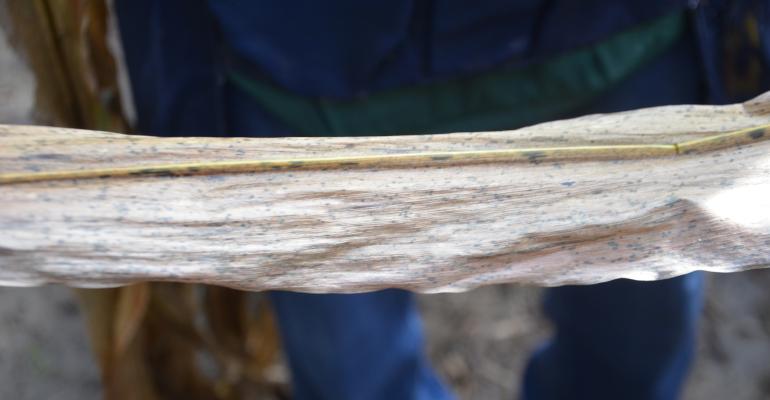Can you forget about corn diseases now?

Corn Pest Beat: The season isn’t over until it’s over. Scouting can still uncover useful information.
Aug 02, 2022
Our chemical dealer wants to check corn for disease one more time. I told him he was welcome to, but I wasn’t buying any more fungicide. Am I right?
The Indiana certified crop adviser panelists answering this question include Steve Gauck, regional agronomy manager for Beck’s, Greensburg; Andy Like, agronomist with the Evansville AgriSelect LLC, Vincennes; Dan Quinn, Purdue Extension corn specialist, West Lafayette; and Dan Ritter, central region agronomist for Dairyland Seed, based near Rensselaer.
Gauck: Well, it depends! It’s a great time to walk fields and scout. Look for any disease that could cause stalk rots and standabilty concerns. Look to see if ear molds have started to develop so you can make harvest and storage plans.
As for leaf diseases, look at how well your current program is working. If the weather is right for southern rust or tar spot, there are years when a late application of fungicide will pay. When deciding, be sure to understand how severe the pressure is and what weather pattern is coming, and factor in growth stage of corn.
Like: It depends on disease pressure in your fields. It’s not unheard of for disease to reinfest a field after a VT fungicide treatment if conditions are suitable for southern rust, tar spot, northern corn leaf blight or gray leaf spot. Before making a second application that late, see how mature the corn is, since no yield gains can happen after black layer.
It’s an excellent practice to scout fields for disease even late. It allows you to prioritize a diseased field for early harvest to avoid standability issues.
Quinn: The best time to scout for disease in corn is two weeks prior to R1, which is silking, and throughout pollination. A lot of research has determined that a fungicide application at R1 or the R2 blister stage provides the most consistent disease control and yield response. In addition, research has not shown a benefit to a fungicide application past the R4 dough stage.
Therefore, if significant disease pressure has not been observed, a fungicide application has already been made at R1 or R2, and corn has progressed into later grain fill stages, an additional fungicide application would not be needed. In the majority of instances, a fungicide is not going to provide a benefit if disease and/or conditions conducive for disease development are not present.
Ritter: Disease encompasses a lot. Are we talking foliar disease, ear rots or stalk rots? From a foliar disease standpoint, tar spot can really kick it up a notch in late August to mid-September. A great deal depends on the stage of corn development and disease development. Most information indicates yield increases from fungicides are limited after R3.
Scouting doesn’t mean you have to spend money on fungicides. It could help with harvest management. I often look at late scouting trips as harvest management. If a field has a great deal of late-season foliar disease, do we schedule it sooner to harvest? It will be stressed more and may lose stalk integrity. Speaking of stalk integrity, stalk rots and ear mold concerns begin to emerge as we get into September. Catching early signs of these problems would be an advantage in managing harvest. So, great idea to have the field scouted regardless.

